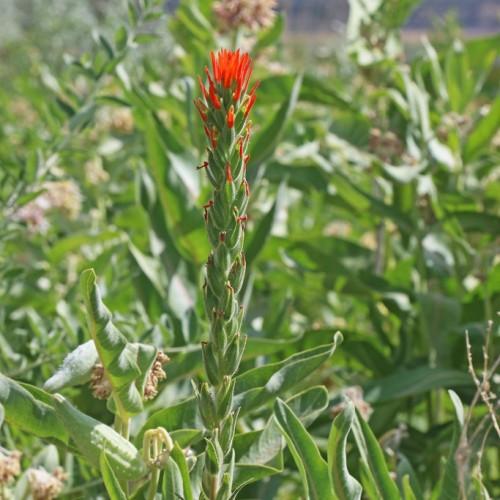
Annual Paintbrush
Castilleja minor var. exilis
Watering:
Frequent
Hardiness Zone:
Sun:
full sun,part shade
Growth Rate:
Low
Drought Tolerant:
Yes
Salt Tolerant:
Yes
Care Level:
Moderate
watering
Water Elko Indian Paintbrush plants regularly, but avoid overwatering. Water deeply and slowly, allowing the soil to become moist, but not soggy. Water 2 or 3 times a week during the summer and reduce watering during the cooler months. Water from the bottom (e.g. fill a saucer underneath), if possible, to prevent the leaves from becoming wet and susceptible to diseases. Generally, water in the morning, as plants are able to make use of the water better during the non-peak sunlight times and also reduced evaporation.
sunlight
Elko Indian Paintbush (Castilleja miniata var. fulva) is a perennial and prefers full sun to partial shade. During the spring and summer months, it should receive 12-14 hours of sunlight per day. For the remainder of the year, Elko Indian Paintbush should be provided with 6-8 hours of sunlight per day. This does not have to be direct sunlight, and diffused sunlight (filtered through thin clouds or other covered areas) can be beneficial for the plant. If that is not available, providing partial shade to protect the plant from the hotter afternoon rays will suffice.
pruning
In general, Elko Indian Paintbrush should be light to moderately pruned in early spring. Pruning should aim to remove any dead or damaged branches and can be done as much or as little as necessary. It is important to trim back any tall and sprawling stems to encourage shorter, fuller growth. Secondary flowers may also be removed to improve the flowering display. Deadheading spent flowers can help prolong bloom time. Avoid heavy pruning as it can damage the plant and reduce flowering.
